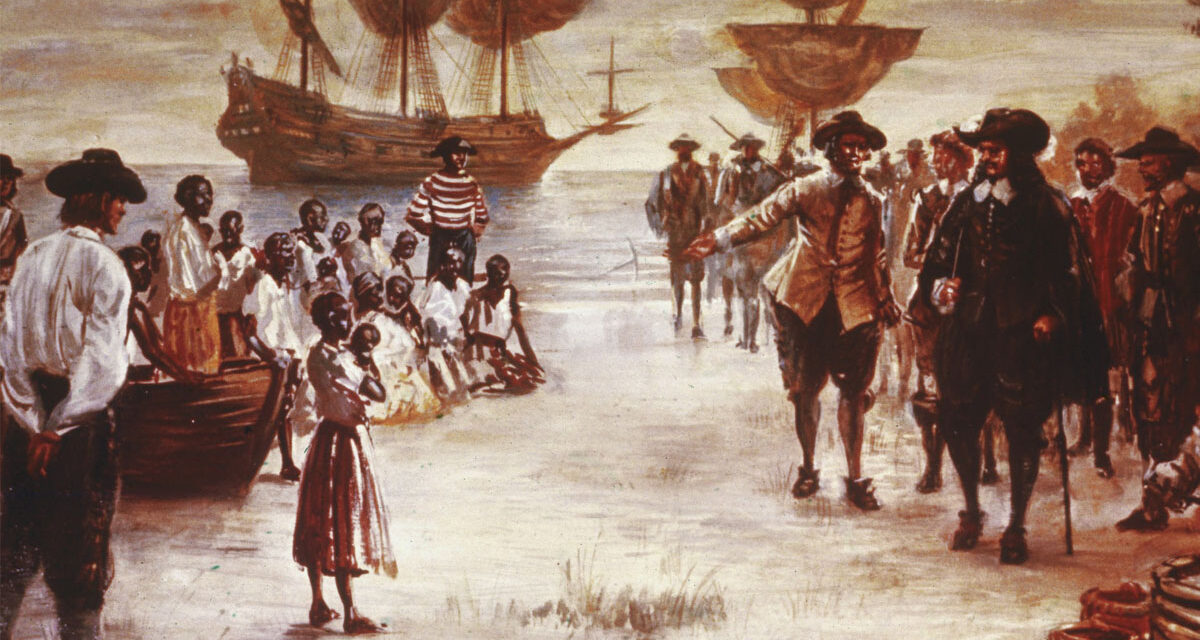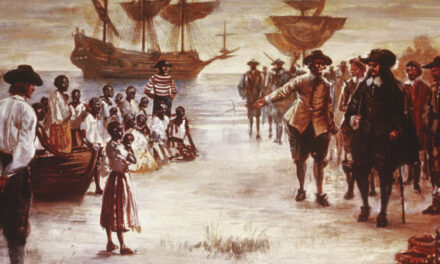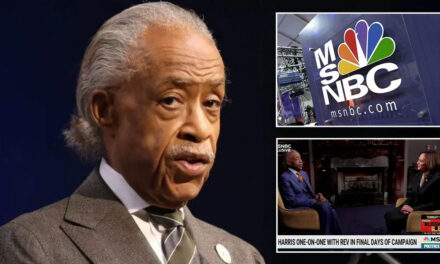
When did slaves first arrive in North American? And no, it was not 1619

I pose the headline question for a reason. It is to correct the common belief that it was in the year 1619 in what is now Hampton, Virginia that the first African slaves arrived in the on what would become American soil. President Biden was recently in Angola, Africa to memorialize that date — and the first shipment of slaves sailing out of that nation for the American colonies.
There are three things wrong with that memorial celebration. That is not the date the first slaves arrived in the Americas – or on the North American continent that would later become the United States. Virginia was not the first location where slaves arrived. And they did not uniquely originate from Angola.
The first slaves arrived on the North American continent almost 100 years earlier — in 1526. They arrived in what is now South Carolina. They were brought to what was then the Spanish colony of San Miguel de Gualdape.
Angola was only one of several locations providing slaves – and not a significant source for the Spanish. Slaves were obtained from a much larger region of Africa that now encompasses Senegal, Zambia, Congo, the Democratic Republic of the Congo (formerly Zaire) and other locations.
In preparing for my book, “Who Put Blacks in That PLACE. The long sad history of the Democratic party’s oppression of Black Americans … to this day,” I researched the Black experience in North America from the time of the FIRST arrival of slaves to today. I was familiar with the initial arrival in 1526.
That is why I winced when Biden celebrated the date as 1619 as the first shipment of slaves to North America. I suspect he got his misinformation from the recent “Project 1619” produced by Nikole Hannah-Jones, a writer for The New York Times Magazine.
There is a reason why Hannah-Jones got the date wrong. Not a good one, in my judgment, but a reason. She was not writing about the first slaves to set foot on what would become the United States – although that is the perception most folks have thanks to Project 1619. Hannah-Jones was tracing the Black experience from the first to arrive AT AN ENGLISH COLONY. The highly controversial Project 1619 left out almost one hundred years of Black history – including a number of noteworthy events.
The first slave uprising in North America occurred shortly after the slaves arrived in 1526. The recently arrived slaves set fire to their homes and escaped to integrate with Native American tribes – a practice that would occur in other areas in later years. It explains why so many Black Americans today have Native American in their DNA.
I never understood why 1619 took historic precedence over the actual date when slaves were brought to what is now the United States. And why an English colony was more meaningful than the Spanish colony. Seems to me that the actual FIRST is the most significant date. And why write off 100 years of Black history?
In fact, African slavery was flourishing throughout South America and the Caribbean before they arrived in the English colony of Virgina in 1619. Slaves had first arrived in Brazil in 1533. And the vast majority of slaves arriving in the New World in 1619 went to South America and the Caribbean.
In trying to figure out the reason why Hannah-Jones and the academic world see greater significance with 1619 than 1526, I can only assume that there is an undercurrent of anti-Anglo-ism. It makes the bad guys the White Europeans—and distracts attention from the role of the Spanish. In today’s culture, Latinos are considered to be people of color by the left-wing establishment (even though a majority of Latinos consider themselves to be – and are – White). Perhaps there is another explanation for cherry picking 1619, but I have no idea what it might be.
We may have travelled too far down this rabbit hole. But the intentional misdating of the arrival of the first slaves in what is now the United States raises questions. It only add to the controversy that surrounds Project 1619 in its entirety.
So, there ‘tis.
































For what it’s worth, I remember being taught that slavery in the US began in the year 1619, from a grade school history class fifty years ago. Makes me wonder about the accuracy of so many other things with which I was indoctrinated, even then.
reward: I agree. Question all. Including Horist.
Reward:
Also, fool me once, shame on you. Fool me twice, shame on me.
Most important:
Trust, but verify.
Verification follows.
Never question Horist. He is always right.
The author “winced” over 1619; surely you jest? And I am not calling you Shirley, I cannot read your mind. Not that there’s anything wrong with that. This discussion is decades old. In the same vein that we know Columbus did not discover America, yet Columbus Day is still on the calendar. Or that Biden won the 2020 election, heh, heh. Fact is, we just don’t care this much and every once in a while, experts more scholarly on the topic than the author exhume the earlier arrivals. Then then discussion over servant, indentured servant or slave as descriptor comes to mind. I prefer “workers without pay.”
“When the legend becomes fact, print the legend.” I don’t agree with this quote from The Man Who Shot Liberty Valance, and love discovering the true facts, but don’t get hung up over what is printed. And I certainly don’t need to impune the lame duck Biden only six weeks before his retirement. That’s Horist. Win – lose. All for a book plug. Who care re: 1500’s, 1600’s, when we know it all started at Oak Island where all North American white and black cultures began. Tis the Templars, and not Simon.
As a real historian, Henry Louis Gates Jr. showed Juan Garrido as the first documented black person to arrive in what would become the U.S. with Juan Ponce de León in search of the Fountain of Youth in 1513, and they ended up in present-day Florida, around St. Augustine. Juan was free, known as “Handsome John” and not a slave, but black is black….
Then, as the author stated, in 1526, a Spanish expedition to present-day South Carolina was thwarted when the enslaved Africans aboard resisted. They rebelled and effectively destroyed the Spanish settlers’ ability to sustain the settlement, which they abandoned a year later. Does it count if they destroyed their owners and were free? Of course it does, and it provides a message how Americans should use violence to remain free.
https://www.smithsonianmag.com/history/misguided-focus-1619-beginning-slavery-us-damages-our-understanding-american-history-180964873/
Then, in 1565, the Spanish brought enslaved Africans to present-day St. Augustine, Fla., the first European settlement in what’s now the continental U.S.
The author uses 1526 to conclude: “It explains why so many Black Americans today have Native American in their DNA.” You do have to be kidding, right? How about “starting the trend of mixed black indigenous Americans” since you don’t have a clue how many originate from South Carolina. Perhaps Juan Garrido was very fertile. Or maybe the folks in St. Augustine, or maybe just Blacks all over America after 1500. FYI, the author is describing .8% as “so many.”
The real reason the author “winces” at Biden mainstream comments: “In preparing for my book, “Who Put Blacks in That PLACE. The long sad history of the Democratic party’s oppression of Black Americans … to this day,” I researched the Black experience in North America from the time of the FIRST arrival of slaves to today. I was familiar with the initial arrival in 1526. “ Hey, he left out Democrats……..missing a beat there that he does not blame Democrats for things 1526. Slow book sales? Still no reviews but used copies abound.
I didn’t see any mention of the British bringing the Irish Prisoners over to North America as White Slaves around 1609, I believe!
1610 to 1676 , tween 50-100k Scottish and Irish prisoners brought to America where they were sold as indentured servants. Others came as indentured servants and perhaps 50-60% of American immigrants were indentured servants.
I looked.
You may think Larry is plugging his book, but you are plugging you! Every single time, you blow up whatever anyone says except for Tom and one other person. You want everyone to think of you as the great historian or the only one who is the Professor of Everything. All people are precious, but you are totally biased in every aspect of any subject. You deliberately demean all of us here on PBP, of course with the exception of your “friends”. Why and how do you think you are above everyone else? It is beginning to look like you really are Kazarian or Jesuit. You leave all of us no other course but to see what I just wrote. Let us know when and if you decide to become human, Mr. God!
Can’t argue with that af. You always attack the person because you are ineffectual at arguing the facts.
He wrote a story that highlights his book with a link to Amazon from a guy who no links. That is a fact, Jack. .
If you want to discuss the issues, do. If you continue to harass and harangue, talk to the hand, not me.